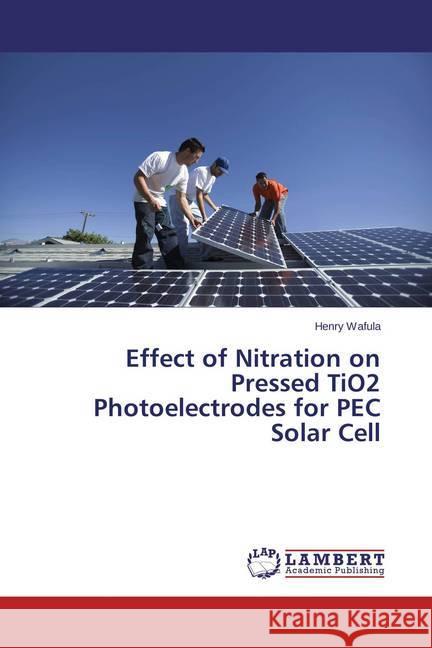Effect of Nitration on Pressed TiO2 Photoelectrodes for PEC Solar Cell » książka
Effect of Nitration on Pressed TiO2 Photoelectrodes for PEC Solar Cell
ISBN-13: 9783659432774 / Angielski / Miękka / 2015 / 72 str.
TiO2 films were made by pressing method and doped by nitrogen. The doping process was done by heat-treatment of pressed TiO2 films in nitrogen, oxygen and argon gas mixture. Nitrogen gas ratio in the doping procedure was varied between 0-0.024. The films were characterized by x-ray diffraction, scanning electron microscopy and optical- and photoelectrochemical (PEC) measurements. TiO2 films prepared without nitrogen had a mixture of anatase and rutile phase for 0.008, beyond = 0.008 anatase phase became prominent. The particle sizes of nitrogen doped films reduced with increase of from an average of 36nm to 18nm therefore the film became more compact and reduced in porosity. Overall energy conversion efficiency, short circuit current and open circuit voltages were found to depend on nitrogen gas ratio. The cell fabricated with nitrogen doped TiO2 photoelectrode had an overall efficiency of 0.70% while the undoped had efficiency of 0.96%. The difference was as a result of reduced porosity due to increase of and nitrogen induced states in the band gap that may act as recombination centers for the electron-hole pairs generated.











